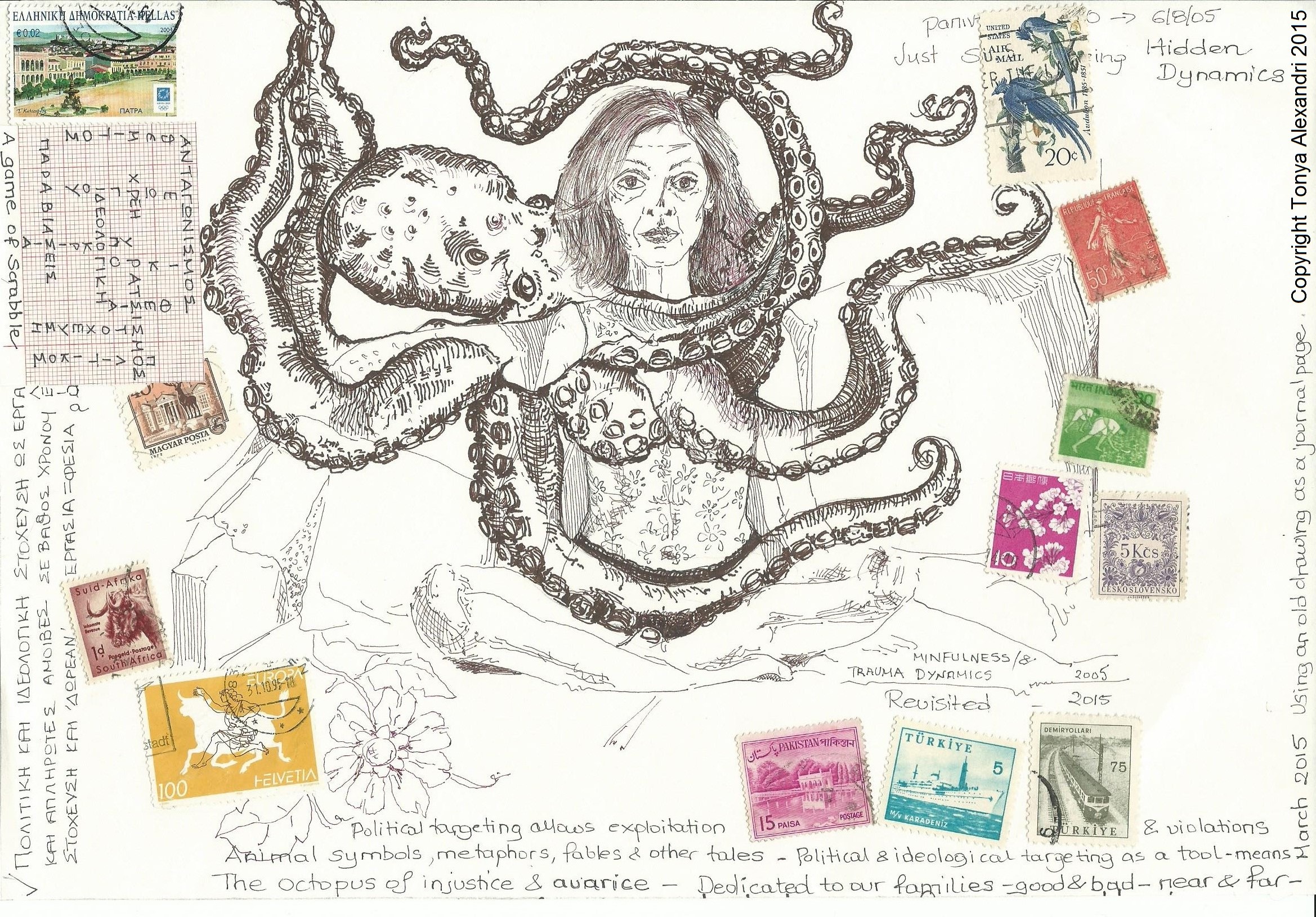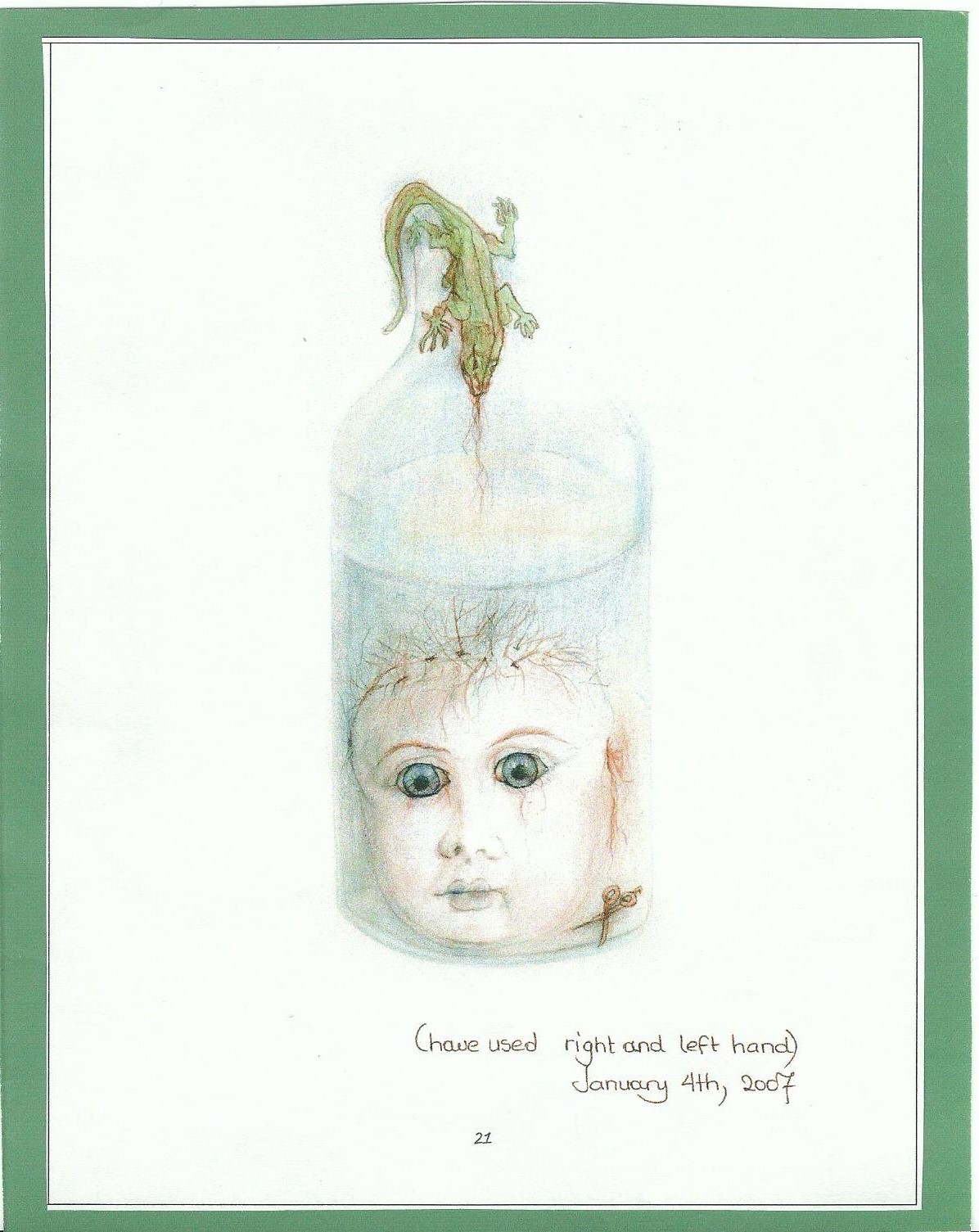Animal symbols and tales of avarice, injustice and discrimination
Animal symbols have been used extensively in expressive arts, myths, fables and children’s stories because they convey so much and create vivid images and rich associations. Exercises that involve drawing animals can be used in (psycho) therapy with children, family therapy or art therapy and can facilitate the healing process and deeper understanding. Specifically, the octopus image below is part of a series of quick pen drawings I made in 2005 and used as an art journal page. Additionally, I think that I am not alone in finding the octopus a powerful symbol to express sensations and overwhelming emotions of constriction. However, for me it is also an image that can powerfully depict dynamics and politics of tangible injustices and outright violations, especially, if prolonged trauma and violations have occurred across time. Of course, one’s interpretation of images, metaphors and symbols are all context dependent and each individual’s meaning making is unique and the result of one’s life experience and social context. The following paragraph could be the accompanying text to the drawing of the octopus below.
The octopus encages its victim, like an ever-seeing, ever-present creature or structure of constant interferences and losses. And although it may often be elusive and slippery like the texture of a live, wet octopus caught in the sea, it still has the potency to rap itself around its chosen object like a constrictor – a firm and elusive grip at the same time. Then as the octopus grows in size and volume and as its life span increases it takes up more and more space, threatening to totally engulf its victim. Yet often the victim, no matter how oblivious it may be to certain aspects of its suffering, struggles frantically to escape the grip, to overcome the battering and losses, to set boundaries, to understand more, fight for justice, and eventually move on. The tentacles could represent areas and aspects of violations and losses, but they may simultaneously represent the guards of the original driving force. The image of the octopus, its head and tentacles, respectively, could also represent past and current victimization and the hidden dynamics. However, an image of an octopus can conjure up a totally different picture and produce completely different associations, at least for those familiar with Greek cuisine and a sense of humour, which is always welcome and helpful. In Greece octopus is a popular chewy delicacy, served in almost every seaside tavern. It is usually prepared by first beating the octopus and then chopping it up into small pieces before thoroughly washing, in order to remove the sand from its tentacles. Only then is it ready to cook. It is often sprinkled with vinegar and accompanied with ouzo, which is a drink similar to the Italian grappa.
To sum up, survivors’ artwork may often contain common symbols and their meaning making of certain images may also be similar. I do discuss this elsewhere in the site. Moreover, trauma survivors, across contexts, may tend to use similar images and metaphors to express pain or other experiences and we may at times all use similar metaphors or symbols to describe pain, loss, grief, anxiety, anger or fear. Theodor Kallifatides depicts his grief vividly in the following short extract of his book Η Όλγα της Αγάπης. ‘I knew exactly how big my sadness (grief) was, but I couldn’t do anything about it. My sadness was not a cocoon that would reveal a butterfly. It was me hiding in my grief like a little boat in a bottle’. In my book Let me be I too have depicted an aspect of me encased in a bottle; however, not to express grief and sadness only, but much more. The image of me encased in a bottle initially surfaced in my mind, spontaneously, as I was processing experience, sensations and emotions. It is important for those doing the arduous work of re-examining the past and dealing with trauma and violations to re-evaluate and re-processes material – art or any other form and product of expression – so that deeper understanding may take place as our meaning making often changes as time goes by.
Tonya Alexandri, March, 2015


